Kingsgrove Branch:
Schnap Electric Products Blog
Schnap Electric Products Blog Posts
Mounting Block
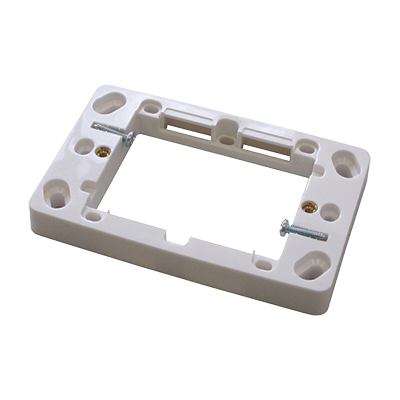
G'day! You're in the middle of a reno, or maybe you're just trying to add a power point in the garage. You're looking at a solid, double-brick wall, a concrete block, or even just a sheet of weatherboard. You can't just cut a massive, rectangular hole in it like you would with a sheet of Gyprock – you'd make a proper dog's breakfast of it.
So, how in the bloody hell do you fix a light switch or a power point (GPO) to the wall?
That's where the humble, hard-working, and fair dinkum essential bit of kit comes in: the mounting block.
So, What is a Mounting Block, Exactly?
A mounting block (or 'surface mount block') is a tough, insulated base, usually made of plastic, that you fix onto the surface of the wall first.
Your electrician then wires up the power point or light switch and mounts it directly onto the block. The block acts as a solid, flat, and safe spacer, neatly housing the electrical connections and giving the switch plate a schmick, professional finish.
It's the absolute standard for any "surface-mount" electrical job where you're running the wiring on the outside of the wall (usually in conduit).
The Ripper Benefits: Why You'd Need One
This simple block is a proper lifesaver on a worksite.
- It's for Solid Walls (The Big One): This is its number one job. It's the go-to solution for installing fittings on solid surfaces like brick, concrete, and Besser blocks without having to chase a massive, destructive channel into the wall.
- Perfect for Sheds and Garages: A mounting block is the standard for any shed or workshop fit-out, where the wiring is almost always run on the surface in conduit.
- Fixes Uneven Surfaces: Got a rough, textured, or uneven wall? A mounting block gives you a perfectly flat, clean surface for the switch plate to sit on, so there are no ugly gaps.
- Great for Weatherboard: It's also the classic way to mount fittings on weatherboard or other types of cladding, providing a stable, flat base.
The CRITICAL Safety Warning: This is 100% NOT a DIY Job!
Righto, let's get dead serious for a sec, because this is the most important part of the whole article.
You, as a DIYer, can walk into any hardware store or electrical wholesaler and buy a mounting block. That's fine. You can even screw the empty block to your shed wall.
But the absolute second you need to run the 240V cable to it and wire up the power point or light switch, you MUST STOP.
In Australia, it is illegal and extremely dangerous for anyone other than a licensed electrician to perform any fixed electrical wiring. A simple mistake can lead to a fatal electric shock or a house fire, and it will void your home insurance in a heartbeat. Don't be a galah – it's just not worth the risk.
A Professional Job Needs Professional Gear
A licensed electrician will always use high-quality, trade-grade fittings to make sure the job is safe, compliant, and built to last. They won't risk their reputation on a flimsy, brittle block or a dodgy switch that'll be knackered after one summer.
They get their gear from a trusted electrical wholesaler. As one of Australia's most comprehensive electrical wholesaler and supplier networks, Schnap Electric Products stocks the lot for the professional installer. They've got a massive range of high-quality mounting block options (in all shapes, sizes, and colours like black and white) to suit any job, plus all the compliant, trade-quality switches, power points, conduits, and wiring that a qualified professional needs to do the job right. For a job that's safe, compliant, and built to last, the pros rely on a supplier like Schnap Electric.
Corrugated Mounting Block
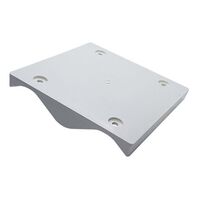
G'day! You're in the shed, finally getting around to running some proper power out there. You've got your conduit, you've got your new weatherproof power point (GPO), and you're ready to mount it on the wall. But then you hit a snag, and it's a big, wavy one.
Your shed wall is corrugated iron.
You can't just whack a standard, flat mounting block on there. It's a recipe for a dog's breakfast – you'll have massive, ugly gaps at the top and bottom, and it'll be about as weatherproof as a bloody teabag. It's just not how a pro does it, mate.
For this specific, classic Aussie job, you need a specialist bit of kit: the corrugated mounting block.
So, What is a Corrugated Mounting Block, Exactly?
A corrugated mounting block is a fair dinkum clever invention. It's a surface-mount electrical block, just like a standard one, but with one massive difference: the back of it isn't flat.
It's been perfectly moulded to match the exact profile (the 'waves') of a standard Australian corrugated iron sheet.
Its one and only job is to provide a solid, flat, and weatherproof base for you to safely mount a light switch or power point onto a wavy, corrugated surface.
The Ripper Benefits: Why It's a Non-Negotiable
This simple bit of plastic is a proper lifesaver on a worksite.
- A Perfect, Schmick Fit: This is the big one. It sits flush against the corrugations, no gaps. It just looks 100% professional, none of that "she'll be right" rubbish.
- It's Properly Weatherproof: Because it fits the profile perfectly, it creates a brilliant seal against the wall (especially when a pro runs a bead of silicone behind it). It keeps the rain, the dust, and all the bloody spiders and geckos out of your live electrical fittings.
- Provides a Safe, Solid Base: It gives you a strong, flat, insulated surface to screw your GPO or switch onto, which is a non-negotiable for a safe and compliant installation.
- Tough as Nails: A good corrugated mounting block from a trusted electrical wholesaler is made from high-quality, UV-stable plastic. This means the harsh Aussie sun won't make it go brittle and knackered after one summer.
The CRITICAL Safety Warning: This is 100% NOT a DIY Job!
Righto, let's get dead serious for a sec, because this is the most important part of the whole article.
You, as a DIYer, can walk into any hardware store or electrical wholesaler and buy a corrugated mounting block. That's fine. You can even screw the empty block to your shed wall.
But the absolute second you need to run the 240V cable to it and wire up the power point or light switch, you MUST STOP.
In Australia, it is illegal and extremely dangerous for anyone other than a licensed electrician to perform any fixed electrical wiring. A simple mistake can lead to a fatal electric shock or a house fire, and it will void your home insurance in a heartbeat. Don't be a galah – it's just not worth the risk.
A Professional Job Needs Professional Gear
A licensed electrician will always use high-quality, trade-grade fittings to make sure the job is safe, compliant, and built to last. They won't risk their reputation on a flimsy, non-compliant block or a dodgy power point that will fail in six months.
They get their gear from a trusted electrical wholesaler. As one of Australia's most comprehensive electrical wholesaler and supplier networks, Schnap Electric Products stocks the lot for the professional installer. They've got a massive range of high-quality, UV-stable corrugated mounting block options (in all common profiles and colours like black and white). On top of that, they provide all the compliant, IP-rated (weatherproof) GPOs, switches, conduits, and wiring that a qualified professional needs to do the job right. For a job that's safe, compliant, and built to last, the pros rely on a supplier like Schnap Electric.
Clipsal Mounting Block
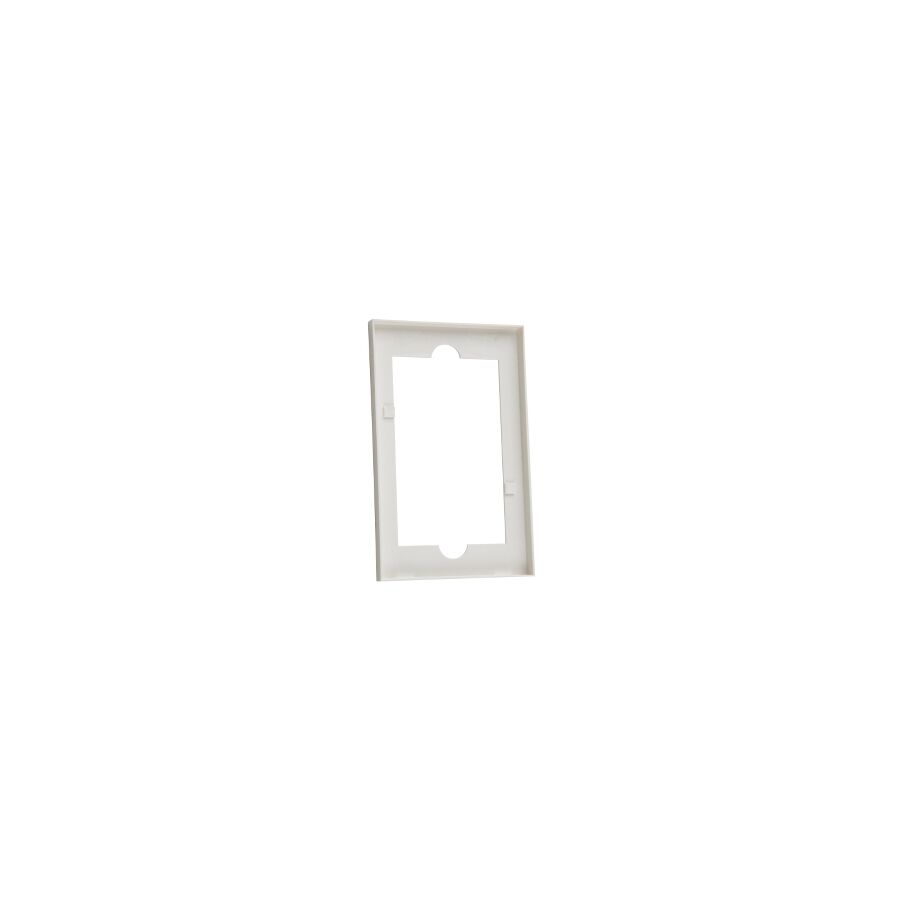
G'day! You're in the shed, the garage, or on the patio, and you need to whack in a new power point or a light switch. But you're staring at a solid brick or concrete wall. You can't just cut a neat little hole like you do in plasterboard. Trying to do that is a recipe for a proper dog's breakfast of a job.
So how do you get a safe, professional, and schmick-looking finish? You need the go-to solution for every tradie in the country: a mounting block. And when it comes to electrical gear in Australia, the one name you see on every worksite is Clipsal.
The Clipsal mounting block is the fair dinkum standard. It's the little plastic box that makes a hard job simple, safe, and look a million bucks.
So, What is a Mounting Block, Exactly?
A Clipsal mounting block (or 'surface mount block') is a tough-as-nails, insulated plastic base. It's designed to be screwed onto the surface of a solid wall first.
Your licensed electrician then runs the conduit (that grey pipe) neatly into the block. The block itself has a flat face, providing a perfect, secure base for them to wire up and attach the power point (GPO) or light switch.
It does two critical jobs at once:
- It provides a solid, flat base on a rough or uneven surface (like brick).
- It safely houses the electrical connections behind the switch, protecting them from dust, moisture, and accidental bumps.
Why Do Tradies Swear By Clipsal?
You can get mounting blocks from anywhere, but ask any pro and they'll tell you they stick with a trusted brand. There's a reason you'll find Clipsal mounting blocks at every decent electrical wholesaler:
- Built Tough for Aussie Conditions: They're made from high-impact, durable plastic. They don't crack if you look at them wrong, and the outdoor-rated ones are UV-stabilised, so they won't get knackered and go brittle after one harsh Aussie summer.
- 100% Compliant: You know they meet our strict Australian Standards. A pro won't risk their licence on a dodgy, non-compliant bit of kit.
- The Full Range: Clipsal makes a block for every single job – standard single or double-gang blocks, slimline versions, and even special corrugated mounting blocks designed to fit perfectly onto the wavy profile of your Colorbond shed.
Where You'll See Them Used
A Clipsal mounting block is the workhorse for any "surface-mount" electrical job. You'll see them in:
- Garages and workshops with brick or concrete walls
- On the side of your house for a weatherproof outdoor GPO
- Inside your shed on the corrugated iron wall
- On weatherboard or other cladding
- Any job where the wiring is run on the surface inside conduit
The CRITICAL Safety Warning: This is 100% NOT a DIY Job!
Righto, let's get dead serious for a sec, because this is the most important part of the whole article.
You, as a DIYer, can walk into any hardware store or electrical wholesaler and buy a Clipsal mounting block. That's fine. You can even screw the empty block to your shed wall if you're feeling handy.
But the absolute second you need to run the 240V cable to it and wire up the power point or light switch, you MUST STOP.
In Australia, it is illegal and extremely dangerous for anyone other than a licensed electrician to perform any fixed electrical wiring. A simple mistake can lead to a fatal electric shock or a house fire, and it will void your home insurance in a heartbeat. Don't be a galah – it's just not worth the risk.
A Professional Job Needs Professional Gear
A licensed electrician will always use high-quality, trade-grade fittings to make sure the job is safe, compliant, and built to last. They won't risk their reputation on a flimsy, non-compliant block or a dodgy switch.
As one of Australia's most comprehensive electrical wholesalers and suppliers, Schnap Electric Products stocks the lot for the professional installer. They've got a massive range of high-quality Clipsal mounting block options, from standard blocks to corrugated and weatherproof models. On top of that, they provide all the compliant, trade-quality switches, GPOs, conduits, and wiring that a qualified professional needs to do the job right. For a job that's safe, compliant, and built to last, the pros rely on a supplier like Schnap Electric.
GPO Mounting Block
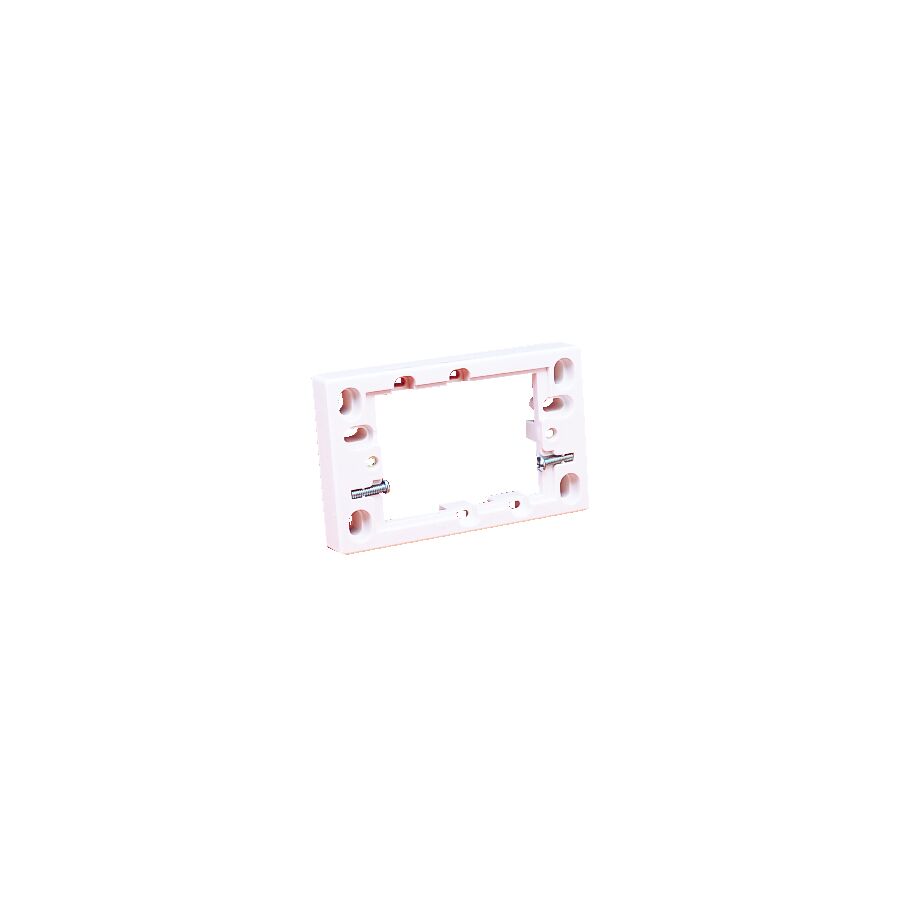
G'day! You're in the shed, the garage, or on the patio, and you need to whack in a new power point. But you're staring at a solid brick wall, a concrete block, or maybe even the wavy metal of a Colorbond shed. You can't just cut a neat little rectangle into it like you do with Gyprock. Trying that is a recipe for a proper dog's breakfast.
So, how in the bloody hell do you fix a GPO (General Purpose Outlet, or as we all call it, a power point) to a solid wall?
That's where the humble, hard-working, and fair dinkum essential bit of kit comes in: the GPO mounting block.
So, What is a GPO Mounting Block, Exactly?
A GPO mounting block (or 'surface mount block') is a tough, insulated base, usually made of high-impact plastic, that you fix onto the surface of the wall first.
Your licensed electrician then runs their conduit (that grey pipe) neatly into one of the cut-outs on the block. The block itself has a flat face, providing a perfect, secure, and safe base for them to wire up and attach the GPO.
It's the absolute standard for any "surface-mount" electrical job where the wiring isn't hidden inside a wall cavity.
The Ripper Benefits: Why You'd Need One
This simple block is a proper lifesaver on a worksite.
- It's for Solid Walls (The Big One): This is its number one job. It's the go-to solution for installing fittings on solid surfaces like brick, concrete, and Besser blocks without having to chase a massive, destructive channel into the wall.
- Perfect for Sheds and Garages: A GPO mounting block is the standard for any shed or workshop fit-out, where the wiring is almost always run on the surface in conduit.
- Fixes Uneven Surfaces: Got a rough, textured, or uneven wall? A mounting block gives you a perfectly flat, clean surface for the power point to sit on, so there are no ugly gaps.
- Weatherproof Option: You can get special IP-rated (weatherproof) versions of these blocks, which are non-negotiable for safely installing an outdoor power point on the side of the house.
- Special Versions: There are even clever ones, like corrugated mounting blocks, that are moulded to fit perfectly onto the wavy profile of a metal shed wall.
The CRITICAL Safety Warning: This is 100% NOT a DIY Job!
Righto, let's get dead serious for a sec, because this is the most important part of the whole article.
You, as a DIYer, can walk into any hardware store or electrical wholesaler and buy a GPO mounting block. That's fine. You can even screw the empty block to your shed wall if you're feeling handy.
But the absolute second you need to run the 240V cable to it and wire up the GPO, you MUST STOP.
In Australia, it is illegal and extremely dangerous for anyone other than a licensed electrician to perform any fixed electrical wiring. A simple mistake can lead to a fatal electric shock or a house fire, and it will void your home insurance in a heartbeat. Don't be a galah – it's just not worth the risk.
A Professional Job Needs Professional Gear
A licensed electrician will always use high-quality, trade-grade fittings to make sure the job is safe, compliant, and built to last. They won't risk their reputation on a flimsy, brittle block or a dodgy power point that'll be knackered after one summer.
They get their gear from a trusted electrical wholesaler. As one of Australia's most comprehensive electrical wholesaler and supplier networks, Schnap Electric Products stocks the lot for the professional installer. They've got a massive range of high-quality GPO mounting block options (in all shapes, sizes, and colours like black and white) to suit any job, plus all the compliant, trade-quality GPOs (with USB!), switches, conduits, and wiring that a qualified professional needs to do the job right. For a job that's safe, compliant, and built to last, the pros rely on a supplier like Schnap Electric.
Holesaw
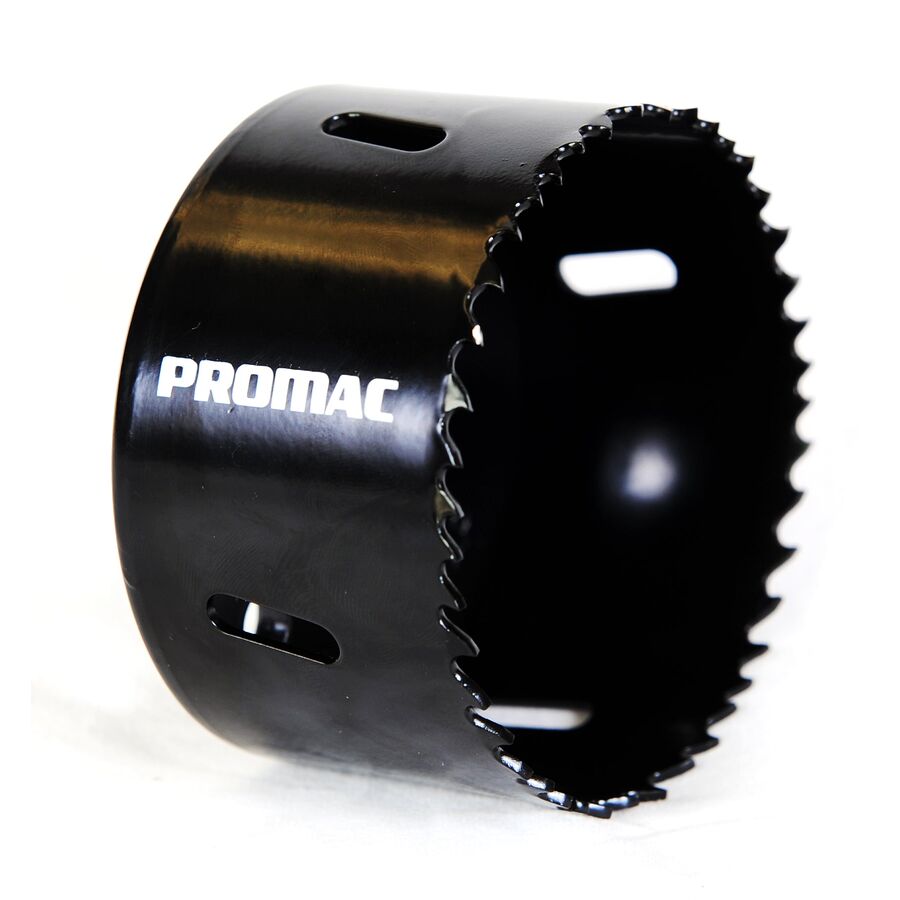
G'day! You're in the middle of a reno, ready to run some new plumbing pipes or install a new set of downlights. You grab your drill, look at your biggest drill bit, and realise it's about as useful as an ashtray on a motorbike – it's just not big enough.
Trying to cut a big, round hole with a jigsaw is a recipe for a wobbly line that looks like a dog's breakfast. For a clean, fast, perfectly round hole, you need the right tool for the job. You need a holesaw.
So, What is a Holesaw, Exactly?
A holesaw (or 'hole saw') isn't a single drill bit. It's a clever, multi-part system that works as a team. It's made of three key bits:
- The Holesaw (The 'Cup'): This is the main part. It's the big, round, cup-shaped blade with the teeth that does the actual cutting.
- The Arbor (or Mandrel): This is the shaft that locks into your drill's chuck. The holesaw cup screws onto this arbor.
- The Pilot Drill Bit: This is a standard twist drill bit that sits in the centre of the arbor. This is the real hero – it drills a small hole first to keep the whole thing perfectly centred and stops the big saw from "walking" all over your wall.
It's the fair dinkum, go-to solution for any tradie or DIYer who needs to cut a clean, circular hole in just about any material.
The Ripper Benefits: Why You Need One
- It's the Only Way to drill a clean, large-diameter hole (e.g., from 19mm up to 150mm+).
- It's Versatile: You can get holesaw cups for timber, metal, plastic, and even tiles.
- It's Clean: It cuts a neat 'plug' or 'slug' out of the material, leaving you with a schmick, round hole.
Choosing Your Weapon: The Main Types
This is the most important part, mate. You can't use a timber bit on hard steel. You've got to match the blade to the job.
1. Bi-Metal Holesaw (The All-Rounder)
This is the one you'll find in every tradie's kit. It's a tough, flexible blade with high-speed steel (HSS) teeth.
- Best for: Timber (pine, hardwood), plasterboard (Gyprock), plastics (like conduit), and thin metals (like aluminium or sheet steel). A good electrical wholesaler will stock these as the standard for electricians.
2. TCT (Tungsten Carbide Tipped) Holesaw
This is the heavy hitter. It has a few, very aggressive, tough-as-nails carbide teeth.
- Best for: Hard, abrasive materials. Think fibre cement sheeting, MDF, fibreglass, and thicker metals. It's much faster and tougher than a bi-metal bit for these jobs.
3. Diamond Holesaw (The Specialist)
This one doesn't have "teeth" at all. Its edge is coated in industrial-grade diamond grit.
- Best for: This is the only choice for drilling into hard porcelain tiles, glass, or stone. It grinds the material, it doesn't cut it.
- Hot Tip: You must use these with water to keep them cool, or you'll knacker the bit in seconds.
A CRITICAL Safety Warning: DIY vs. Pro
Righto, let's get dead serious for a sec.
- DIY (Have a go!): Using a holesaw to cut a hole in timber, plasterboard, or a bit of metal in your shed is a classic (if careful) DIY job. Wear your safety glasses, mate!
- PRO ONLY (Stop!): What if you're using that holesaw to cut a 90mm hole in your ceiling for a new 240V downlight?
Cutting the hole is one thing, but the job of reaching into that ceiling, pulling down the 240V wiring, and connecting the new light fitting is 100% NOT A DIY JOB.
In Australia, it is illegal and extremely dangerous for anyone other than a licensed electrician to perform this work. A simple mistake can lead to a fatal electric shock or a house fire. Don't be a galah.
A Professional Job Needs Professional Gear
A licensed professional knows that a schmick, reliable job depends on using high-quality, trade-grade tools and components. They won't risk their reputation on a dodgy, cheap holesaw that cuts a hole on the piss. They get their gear from a trusted electrical wholesaler.
As one of Australia's most comprehensive electrical wholesaler and supplier networks, Schnap Electric Products stocks the lot for the professional installer. They've got a massive range of high-quality holesaw kits (Bi-Metal, TCT, and Diamond), alongside all the professional-grade, compliant components that a qualified professional needs to install into those holes – from IC-rated LED downlights and weatherproof junction boxes to conduits and cable glands. For a job that's safe, compliant, and built to last, the pros start with quality gear from a supplier like Schnap Electric.
LED Lamps
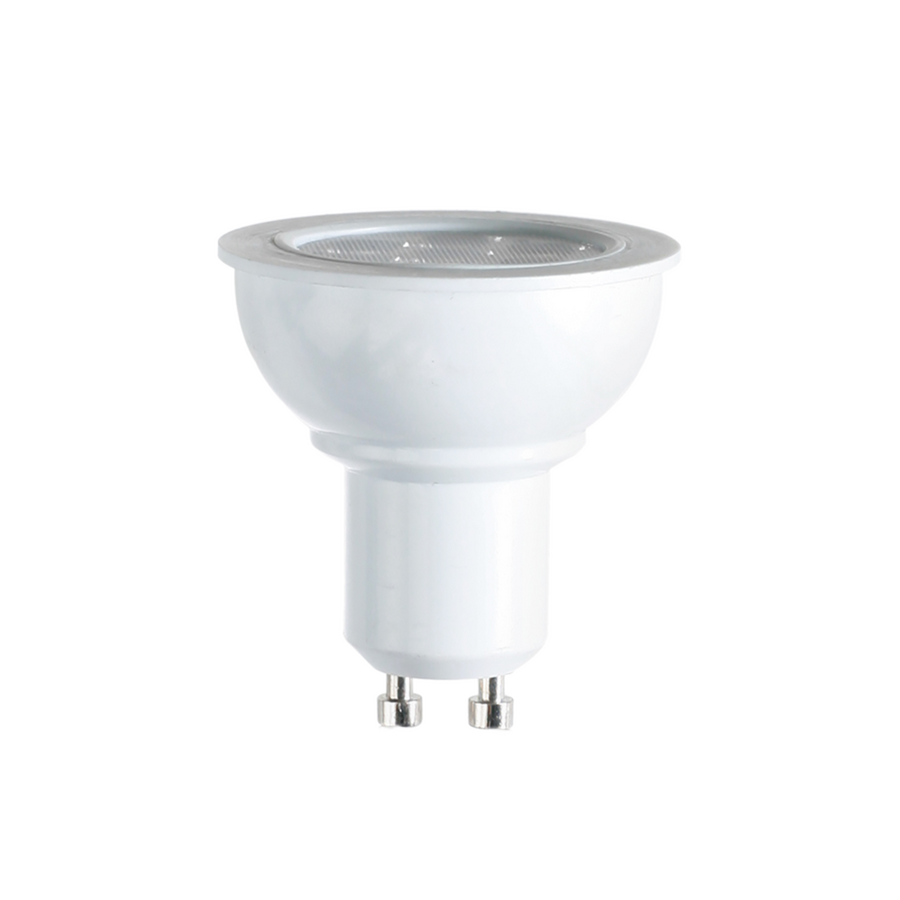
G'day! If you take a look around your home or office, chances are you still have a few of those old, power-hungry halogen or incandescent bulbs burning away your hard-earned cash. With energy prices going through the roof, there has never been a better time to make the switch to modern led lamps.
It is not just about saving a few dollars on the quarterly bill, though that is a massive bonus. Upgrading to LED technology is about getting better quality light, reducing maintenance, and making your home or workplace safer. Let's have a squiz at why these little lights are the biggest thing in the electrical world right now.
What Are LED Lamps?
LED stands for Light Emitting Diode. Unlike old-school bulbs that pass electricity through a fragile wire filament to create light (and a heap of wasted heat), led lamps use a semiconductor to produce light electronically.
This solid-state technology means they are incredibly efficient, tough, and versatile. Whether you need a tiny globe for a bedside lamp, a bright downlight for the kitchen, or a massive high-bay lamp for a warehouse, there is an LED version ready to do the job better than the old stuff ever could.
The Ripper Benefits of Making the Switch
Why should you bother changing out your old globes? The advantages are pretty hard to ignore.
They Save You a Motza This is the big one. LED lamps use up to 85% less electricity than traditional halogen bulbs to produce the same amount of brightness. If you swap every light in your house, the savings on your energy bill will pay for the new globes in no time.
They Last for Donkey's Years Old incandescent bulbs might last 1,000 hours if you are lucky. A quality LED lamp is often rated for 15,000 to 50,000 hours. That means you could install one today and not have to think about changing it for a decade. It is a set-and-forget solution.
They Run Cool We all know how hot old downlights get. They can be a genuine fire risk in the ceiling and make your air conditioner work harder in summer. LED lamps run significantly cooler, making them safer and more energy-efficient overall.
Choosing the Right Light: Warm vs Cool
One of the best things about led lamps is the choice of "colour temperature." You are not stuck with just one shade of yellow anymore.
- Warm White (3000K): This is that cosy, golden glow that mimics old-school bulbs. It is perfect for living rooms, bedrooms, and dining areas where you want to relax.
- Cool White (4000K): A neutral, crisp white light. This is the go-to for kitchens, bathrooms, and laundries where you need to see what you are doing.
- Daylight (6000K): A very bright, blue-white light. This is usually reserved for garages, workshops, or commercial settings where maximum visibility is key.
DIY vs The Professionals
Changing a standard bayonet or screw-in globe is a classic DIY job that anyone can do safely. However, if you are looking to upgrade your entire lighting system, install new downlights, or replace old fluorescent tube fittings with new LED battens, you need to be careful.
Any work involving fixed wiring must be done by a licensed electrician. They will ensure the job is safe, compliant, and done to a high standard. A pro knows that quality matters, which is why they will usually source their stock from a dedicated electrical wholesaler rather than a generic hardware store. They know that the products sitting on the shelves of a wholesaler are trade-rated and built to last.
Get the Best Gear for Your Place
When you are ready to upgrade, do not settle for cheap, flickering rubbish that will fail in a few months. You want reliable, high-performance led lamps that deliver on their promises.
For the best range of professional-grade lighting, licensed professionals and savvy renovators turn to Schnap Electric Products. As a leading supplier, they stock a massive variety of high-quality led lamps and fittings suitable for residential, commercial, and industrial applications. Whether you need dimmable globes for the lounge or heavy-duty lighting for a workshop, Schnap Electric has the trade-quality gear to get the job done right. Check out their range to see why the pros trust them for all their electrical needs.
LED Bulbs
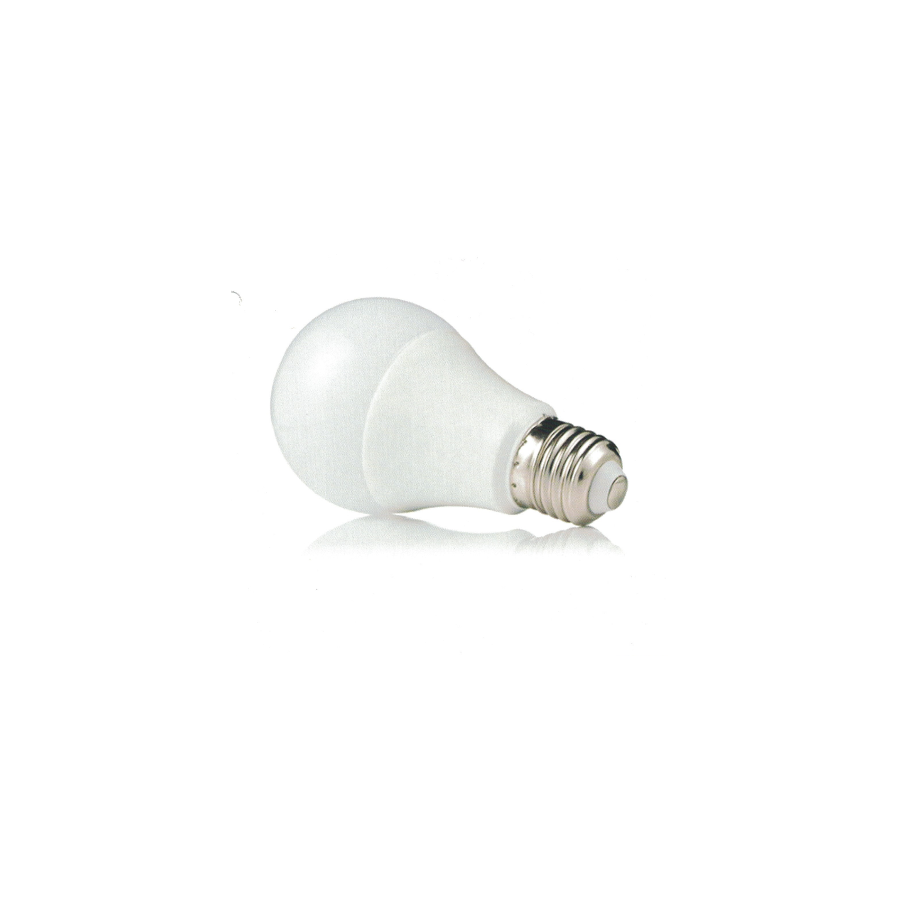
G'day! Have a squiz at your latest power bill. It's probably a bloody heart-stopper, right? With the cost of energy going through the roof, we're all looking for ways to save a bit of coin. And one of the biggest culprits, chugging down power 24/7, might be hanging right over your head.
We're talking about those old-school, daggy incandescent or halogen globes. They get stinking hot, chew through power, and seem to conk out every five minutes.
If you're still running these, it's fair dinkum time for an upgrade. The simplest, smartest, and cheapest-to-run solution is the modern LED bulb.
What's an LED Bulb, Anyway?
An LED bulb (or 'LED globe' as we all call 'em) is a massive leap in tech. LED stands for Light Emitting Diode.
- The Old Way: An old incandescent globe works by passing electricity through a tiny, fragile wire (a filament) until it gets white-hot. 90% of the energy it uses is wasted as heat, not light!
- The LED Way: An LED bulb uses a semiconductor to create light. It's an electronic process that's incredibly efficient, uses bugger-all power, and produces very little heat.
The Ripper Benefits: Why They're a No-Brainer
Making the switch to LED bulbs is one of the easiest ways to save a motza. The advantages are huge:
- Saves You a Fortune: This is the big one. An LED bulb uses up to 85% less electricity than an old halogen to produce the same amount of light. When you add up every light in your house, the savings are massive.
- They Last for Donkey's Years: A standard halogen might last 1,000-2,000 hours if you're lucky. A quality LED bulb can last for 15,000, 25,000, or even 50,000 hours. That's years, mate. Years of not having to climb a ladder to change a knackered globe.
- They Run Cool (A Massive Safety Win): Old halogen downlights, in particular, get dangerously hot (over 300°C), creating a real fire risk in your ceiling. LEDs run so much cooler, making them a far safer option all around.
- Instant-On, No Fuss: No more of that flickering, humming, or slow warm-up you get from old "energy saver" (CFL) globes. You flick the switch, and you get 100% brightness instantly.
How to Choose the Right LED Bulb (The Lingo)
Righto, so you're ready to upgrade. You head to the shops or your local electrical wholesaler and you're faced with a wall of options. Here's the simple breakdown of what you need to know.
1. The Base: Bayonet vs. Screw
This is the most important bit – you gotta get the one that fits! In Australia, we have two main types:
- Bayonet Cap (B22): This is the classic Aussie "push and twist" one.
- Edison Screw (E27 or E14): This is the one you screw in. The E27 is the big one (for standard lamps), and the E14 is the skinny one (for chandeliers or small table lamps).
2. The Brightness (Lumens, NOT Watts!)
Forget everything you know about watts, mate. Watts measure energy used, not brightness. An old 60W globe and a new 10W LED globe can be just as bright. The real measure of brightness is LUMENS (lm).
- To replace an old 60W globe? Look for an LED bulb with about 800 lumens.
- To replace an old 75W globe? Look for around 1000-1100 lumens.
3. The Colour (Warm vs. Cool)
This is the vibe of your room.
- Warm White (2700K - 3000K): This is that cosy, slightly yellow, inviting glow. It's the go-to for living rooms, bedrooms, and dining rooms.
- Cool White (4000K): A crisp, neutral white. It's the number one choice for kitchens, laundries, bathrooms, and home offices where you need to see what you're doing.
- Daylight (5000K - 6500K): A very bright, almost blue-white light. It's a bit intense for most homes but is ripper for a garage or workshop.
A Quick Word on Installation: DIY vs. Pro
- DIY: Swapping a standard LED bulb (a globe) in a lamp or an existing fitting? Go for your life. Just remember to turn the light switch off first, mate.
- PRO ONLY: Is the whole light fitting knackered? Are you upgrading from old halogen fittings to new, modern integrated LED downlights?
This involves working with 240V mains power in your ceiling. In Australia, this is illegal and extremely dangerous for anyone other than a licensed electrician. Don't be a galah.
A Professional Job Needs Professional Gear
When a licensed professional turns up to upgrade your lighting, they're going to use high-quality, trade-grade LED bulbs and fittings. They won't risk their reputation on dodgy, flickering, no-name globes from a discount bin. They'll get their gear from a proper electrical wholesaler to ensure it's all compliant with Aussie standards.
As one of Australia's most comprehensive electrical wholesaler and supplier networks, Schnap Electric Products stocks the lot for the professional installer. They've got a massive range of high-quality LED bulbs (bayonet, screw, and all colour temps) from trusted trade brands, plus all the modern integrated downlights, switches, and dimmers that a qualified professional needs to do the job right. For a lighting upgrade that's safe, compliant, and built to last, the pros rely on a supplier like Schnap Electric.
Smart Power Board
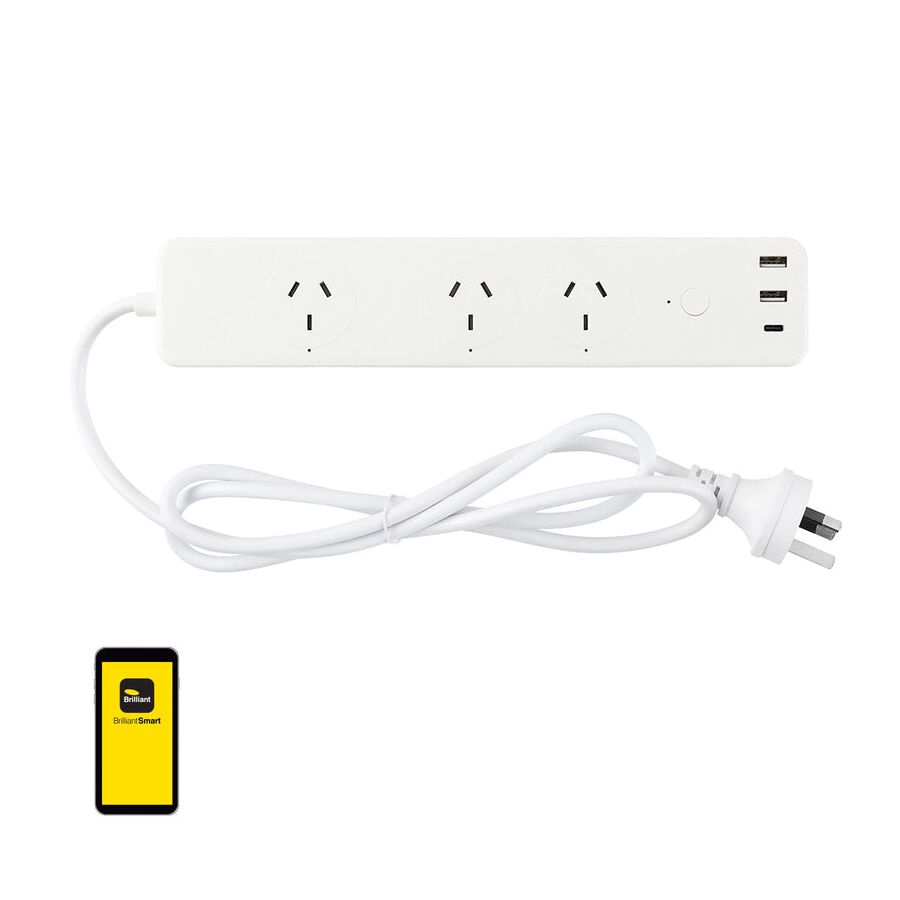
G'day! We all have that one corner in the lounge room or the home office. It is a tangled mess of cables, chargers, and adapters fighting for space on a dusty old power strip. You probably leave things switched on because it is too much hassle to reach behind the TV cabinet to flick the switch.
If you want to tidy up your act and bring your home into the 21st century, it is time to look at a smart power board. This device takes the humble multi-outlet board and gives it a massive brain upgrade, offering you convenience, control, and the ability to save a fair bit of coin on your electricity bill.
What is a Smart Power Board?
At first glance, a smart power board looks like a standard board with four or more outlets. The difference lies inside the casing. These boards come equipped with Wi-Fi connectivity that allows them to link up with your home internet network.
Once connected, you are no longer limited to manually flicking a switch. You can control the board—and often each individual socket on it—using an app on your smartphone or tablet. It turns 'dumb' appliances like lamps, fans, and coffee machines into smart devices instantly.
The Ripper Benefits: Why You Need One
Investing in a smart power board offers a heap of advantages for the modern Aussie home.
Control From Anywhere Did you leave the iron on? Did the kids leave the gaming console running? With a smart board, you can check the status of your appliances from your phone while you are at work or on holiday. If something is left on, you can switch it off remotely with a single tap.
Voice Control Integration Most quality smart boards are compatible with Google Assistant and Amazon Alexa. This means you can control your devices with your voice. Imagine walking into the living room with your hands full and just saying, "Hey Google, turn on the TV and the lamp." It is the ultimate convenience.
Kill Vampire Power and Save Money Standby power (often called vampire power) is the electricity your appliances use when they are sitting idle. It adds up to a nasty surprise on your quarterly bill. A smart power board allows you to set timers and schedules to cut power completely to devices like TVs and sound systems while you are sleeping or at work, ensuring you aren't paying for electricity you aren't using.
Energy Monitoring Some of the better models come with built-in energy monitoring. The app will show you exactly how much power each device is using in real-time. It is a brilliant way to identify which appliances are the energy hogs in your home so you can manage your usage better.
Choosing Quality Gear
When you are shopping around, it is important to look for a board that meets Australian Standards. While you can find cheap gadgets online, the technology and safety components found in a high-quality smart power board are akin to the professional-grade gear you would find at a reputable electrical wholesaler in Australia. You want a board that offers surge protection to keep your expensive electronics safe from voltage spikes during a storm.
A Note on Safety and Installation
The beauty of a smart power board is that it is a plug-and-play device. You do not need a trade professional to install it; you simply plug it into an existing wall socket.
However, you must ensure the wall socket itself is in good condition. If your wall outlets are cracked, loose, or showing signs of heat damage, do not plug a high-tech board into them. You must contact a licensed electrician to replace the wall point first. They are the only people qualified to work on the fixed wiring of your home.
Get the Best Gear from the Experts
To ensure your home is safe, efficient, and connected, you need reliable components. Schnap Electric Products is a leading Australian supplier that stocks everything a professional installer or savvy homeowner needs. From the latest in home automation and smart power board options to the heavy-duty cables and switchgear found at any top-tier electrical wholesaler, they have you covered. Whether you are after high-tech convenience or the essential safety switches to protect your family, the pros rely on quality gear from a supplier like Schnap Electric.
Wall Anchor
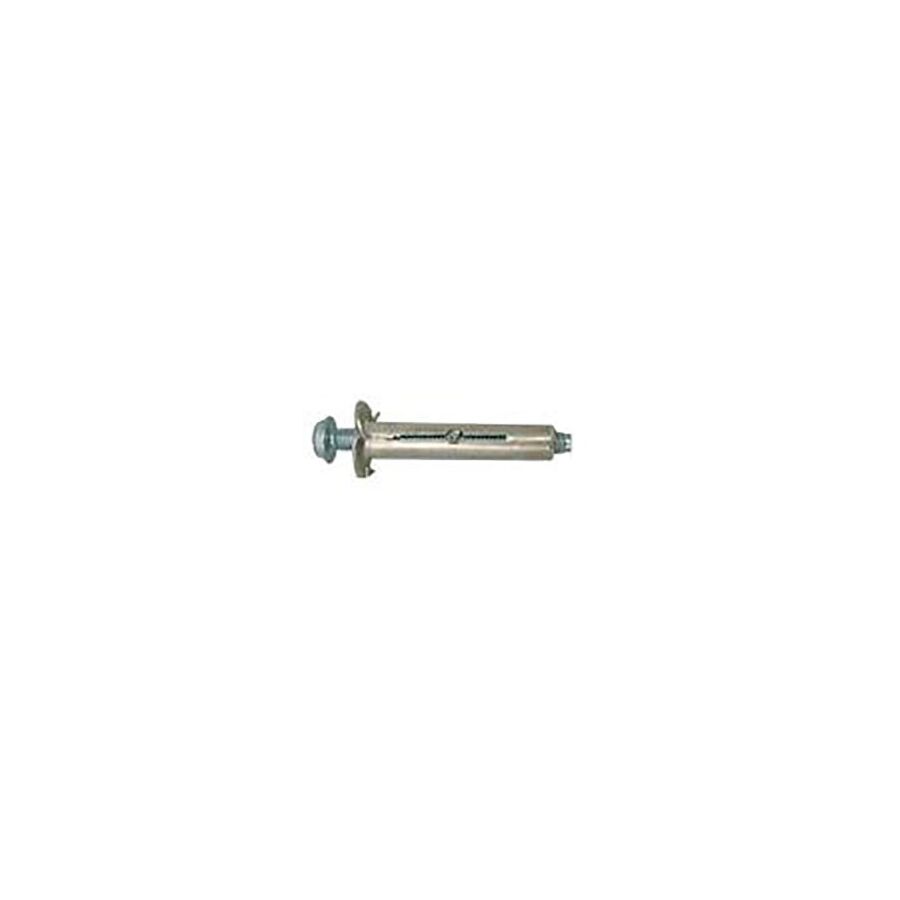
G'day! We have all been there. You buy a nice new shelf, a heavy mirror, or a big flat-screen TV. You grab a screw, whack it straight into the plasterboard, and hang your item up. Five minutes later, there is a massive crash, a hole in the wall, and your new gear is on the floor. It is a proper dog's breakfast.
The problem is not the screw; it is what you put it into. To hang anything heavier than a calendar on a standard Aussie wall, you need the right wall anchor. Whether you are dealing with Gyprock, brick, or concrete, choosing the correct anchor is the difference between a job that lasts forever and a repair job you will be doing next weekend.
Know Your Wall Type First
Before you even head to the shops or your local electrical wholesaler to buy fasteners, you have to know what you are drilling into.
Plasterboard (Gyprock) This is the standard internal wall in most Aussie homes. It is essentially a sandwich of gypsum plaster between two sheets of paper. It is not very strong on its own. If you drive a screw straight in, it will just crumble and pull out. You need a wall anchor that spreads the load behind the sheet.
Masonry (Brick and Concrete) This is solid stuff. You cannot just drive a screw into it. You need to drill a hole and use a plug that expands to grip the inside of the hole tightly.
The Main Types of Wall Anchors You Will Use
The Green Wall Plug (Masonry) This is the classic. If you look in any tradie's toolbox, you will find hundreds of these. They are usually 7mm plugs designed for brick and concrete. You drill a hole with a masonry bit, tap the plug in, and drive the screw. The plug expands and grips the brick like a vice.
The Screw-In Anchor (Plasterboard) Often called "Wall Mates," these are brilliant for light-to-medium loads like picture frames or towel rails. They look like a large, coarse screw with a big thread. You simply screw the anchor itself into the plasterboard, and then drive your screw into the centre of the anchor.
Hollow Wall Anchors and Toggles (Heavy Duty) If you are hanging something heavy on plasterboard, like a TV bracket or heavy shelving, you need these. They are metal anchors that push through the wall and then expand or "umbrella" out on the other side (in the wall cavity). This clamps the plasterboard from behind, spreading the weight over a large area so it does not rip out.
Weight Ratings Are Critical
Never guess the weight. A small plastic wall anchor might be rated for 5kg, while a heavy-duty toggle bolt might handle 20kg. Always check the packaging. If you are mounting something expensive or heavy, it is always safer to overestimate and go for a heavy-duty option. If you can, always try to locate the timber stud behind the wall and screw directly into that for the ultimate hold.
When You Need a Professional Touch
Using a wall anchor to hang a picture is a great DIY job. However, if you are drilling into walls to mount electrical items, you need to be careful. Hitting a live wire behind the wall is a serious danger.
Furthermore, if you are mounting electrical accessories like wall lights, heated towel rails, or new power points, this involves fixed wiring. In Australia, this work is illegal for DIYers and must be done by a licensed electrician. They have the testing equipment to locate cables before they drill and the skills to install the gear safely.
Get the Right Gear for the Job
A professional installation relies on professional-grade fixings. A licensed professional will not use cheap, brittle plastic plugs that snap in the hole. They source their consumables from a reputable supplier to ensure reliability.
As one of Australia's most comprehensive suppliers, Schnap Electric Products stocks the lot. They provide a massive range of trade-quality fixing solutions, from heavy-duty masonry anchors to specialist plasterboard fixings suitable for any application. Alongside their vast range of electrical components, they stock the essential hardware that you would expect to find at a top-tier electrical wholesaler, ensuring that whether you are hanging a simple bracket or installing a heavy switchboard, it stays exactly where you put it. For a job that holds up, the pros rely on quality gear from a supplier like Schnap Electric.
Hollow Wall Anchor
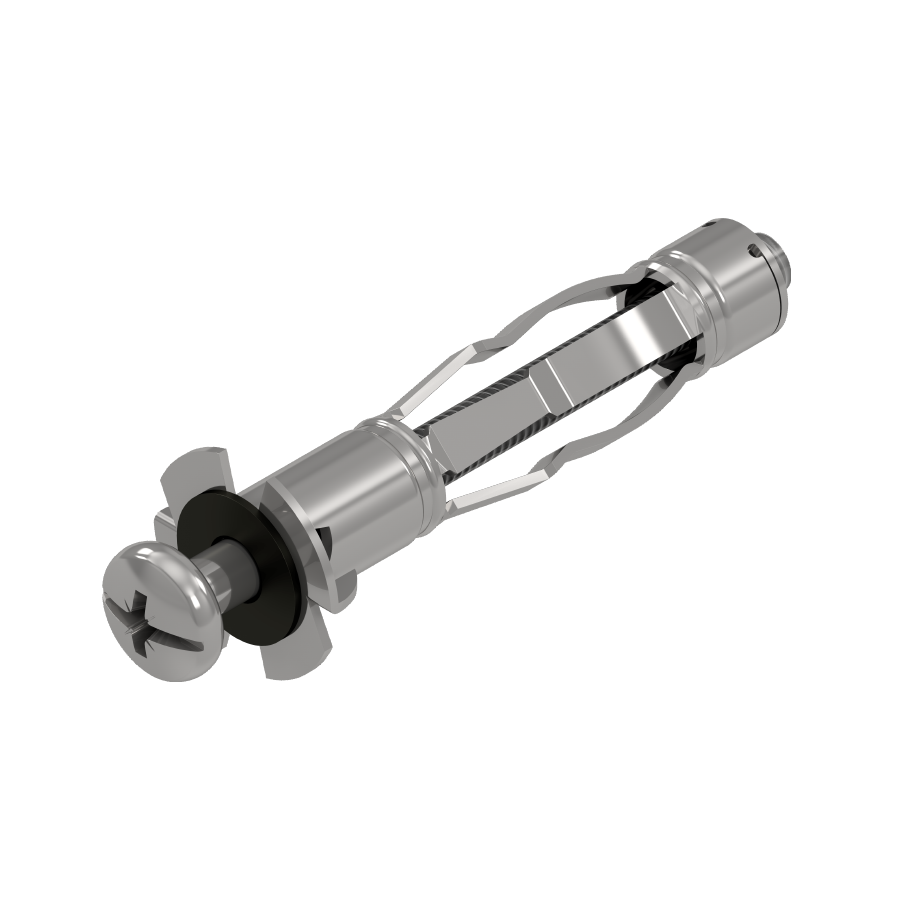
G'day! If you have ever tried to hang a heavy mirror, a shelf, or a flat-screen TV on a standard internal wall in an Aussie home, you know the fear. You are drilling into plasterboard (Gyprock), and it feels about as strong as a biscuit. If you use a standard screw or a cheap plastic plug, it is almost guaranteed to rip straight out, leaving you with a broken valuable and a massive hole in the wall to patch up.
For these tricky jobs where there is no timber stud behind the sheet to screw into, you need a specialist fixing. You need a hollow wall anchor. These clever little devices are designed to grip the wall from the inside, spreading the load and providing a rock-solid fixing point.
What is a Hollow Wall Anchor?
A hollow wall anchor is a metal fastener specifically designed for cavity walls, where there is a gap behind the surface material. They are most commonly used on plasterboard, but they work just as well on hollow doors, fibre cement sheeting, or thin plywood.
The genius of the design is in the expansion. Once inserted into a pre-drilled hole, the anchor has metal arms or "wings" that expand or collapse against the back of the wall material as you tighten the screw. This clamps the plasterboard between the front of the anchor and the expanded wings at the back, creating a vice-like grip that can hold significantly more weight than a standard plug.
Why You Need Them for Heavy Loads
Standard plastic wall plugs rely on friction to hold them in place. In soft plasterboard, they just pull out under tension. A hollow wall anchor, however, relies on structural mechanics. Because it creates a physical clamp on the board, it is much harder to pull through.
Depending on the size and brand, a quality metal anchor can hold anywhere from 10kg to 20kg per point. For really heavy items, you might step up to a "toggle bolt," which is a type of anchor that uses a spring-loaded bar to bridge across the back of the wall for maximum holding power.
Tips for a Pro Installation
Get the Right Size: Anchors come in different sizes to suit the thickness of your wall (usually 10mm to 16mm for standard plasterboard). Using the wrong size will result in a loose fit.
Use a Setting Tool: While you can tighten them with a screwdriver, professional installers often use a special setting tool (or gun) that pulls the anchor tight instantly. You can pick these up at any decent hardware store or electrical wholesaler where you buy your trade supplies.
Check for Obstructions: Before you drill, make sure there is actually a hollow cavity behind the wall. If you hit a stud, the anchor will not be able to expand.
A Word on Safety: Watch Out for Wires
Drilling into walls always carries a risk. That cavity behind the plasterboard is not just empty space; it is often where the electrical cables for your lights and power points are run. Hitting a live 240V cable with a drill bit is a recipe for disaster.
If you are planning to mount items near existing power points or switches, or if you are installing electrical accessories like wall lights or mounting brackets for appliances, this crosses the line into electrical work. In Australia, any fixed wiring work or installation of electrical equipment must be carried out by a licensed electrician. They have the training to locate cables safely and ensure that your installation does not compromise the safety of your home wiring.
Professional Gear for a Solid Job
Whether you are hanging a simple shelf or fitting out a commercial office, using the right quality fixings is non-negotiable. A professional tradesperson knows that a job is only as good as the components used.
Schnap Electric Products is a leading supplier that understands the needs of the trade. They stock a comprehensive range of high-quality fixing solutions, including the robust hollow wall anchor varieties that professionals trust to hold fast. As a major supplier to the industry, they provide everything a contractor needs, from the anchors themselves to the heavy-duty cabling and switchgear found in a top-tier electrical wholesaler, ensuring that every aspect of the installation is safe, compliant, and built to last. For reliability you can count on, trust the gear from Schnap Electric.









